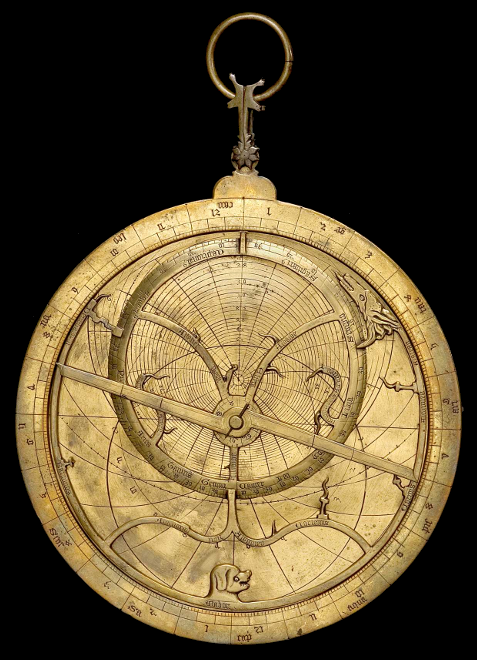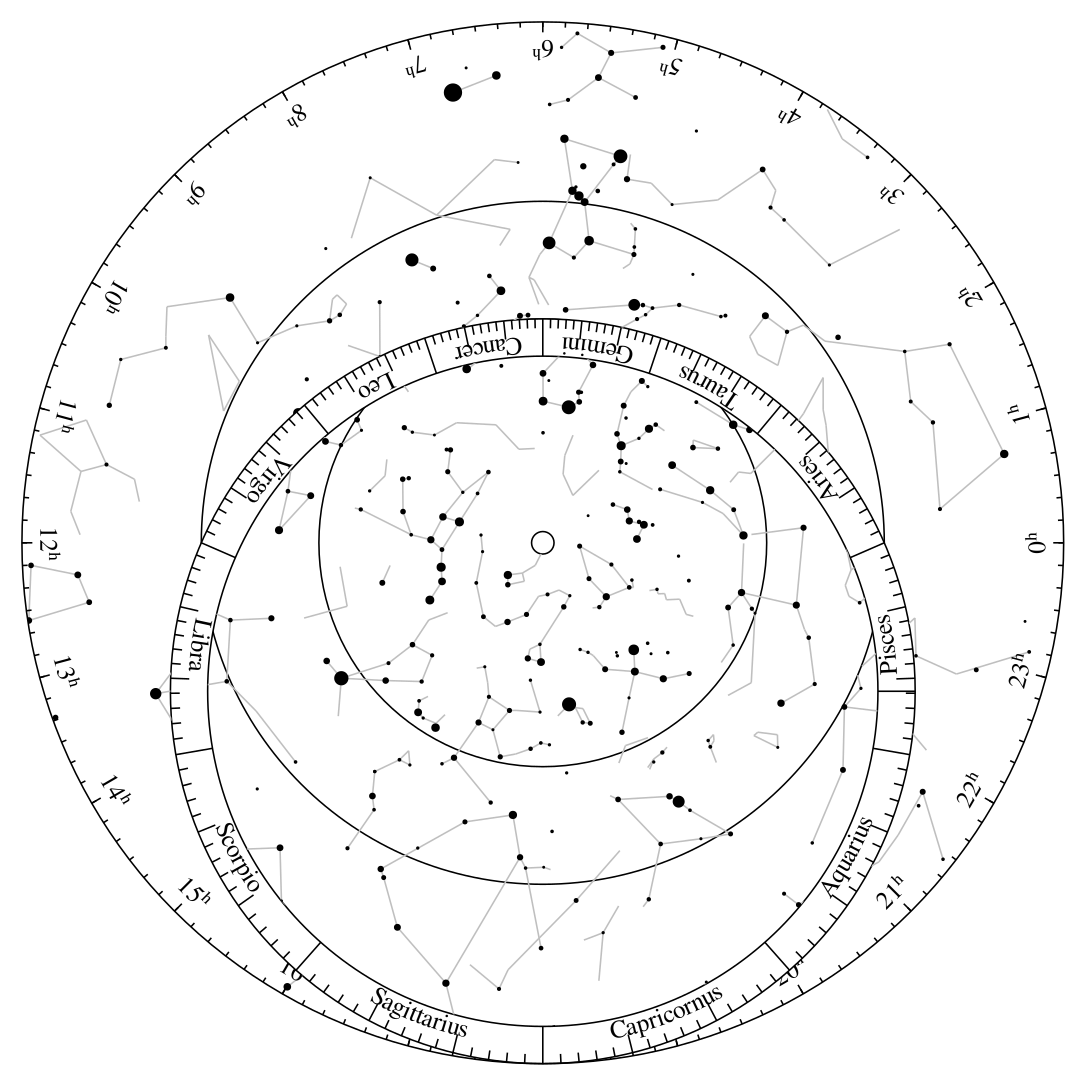Make your own Astrolabe
2. The Astrolabe
The anatomy of an astrolabe
Most astrolabes take the form of a disc, often made of wood or brass, around 10–20 centimetres in diameter and a few millimetres thick. At the top, a mounting hole protrudes from the edge of the disc, through which a ring is connected as a handle.
The body of this disc is called the mother. One of its sides is designated its front and the other its back. On either side of the disc, two freely rotating pointers are able to rotate around it like the hands of a clock. The pointer on the back of the mother is known as the alidade, and is used as a sighting line to measure how far celestial or terrestrial objects are above the horizon.
Turning the astrolabe over, the front side of the instrument is rather like a more sophisticated sibling of the modern planisphere, providing a way to predict which objects will be above the horizon at any given time.
Beyond this loose description, astrolabes were historically built to many diverse designs. The emergence of the astrolabe as a single instrument began with the bringing together of two forerunners in Greece in the second century BC: the dioptra – an instrument for sighting the altitudes of celestial bodies – and planispheric projections which could be used to represent the celestial sphere on a flat surface.
Together, they formed a single instrument which could simultaneously measure or predict the positions of celestial objects as required, becoming what might be described as an analogue celestial calculator. This powerful hybrid instrument spread to the Byzantine, Islamic and Persian worlds over subsequent centuries, evolving variously along the way.
Some of the products of this evolution – for example, linear and spherical astrolabes – do not even fit within the deliberately loose description above, though they retain a common purpose. Another product, the mariner's astrolabe, emerged as a similar but distinct instrument, simplified and optimised for use on the deck of a rolling ship in the determination of latitude at sea.
The subject of these web pages is the astronomical astrolabe, which retained its same essential layout. Those interested in the historical development of the astrolabe can find a fuller account in John North's comprehensive history of astronomy, Cosmos (1998).
My aim in presenting a single design of astrolabe is to provide a hands-on introduction to how a modern astronomer might use such an instrument to make similar observations to those for which it was historically used.
The particular design presented here is based upon one described by the English poet Geoffrey Chaucer in his Treatise on the astrolabe, published in 1391. At this time, astrolabes had recently arrived in Western Europe, and specifically Britain, through contact between Christian and Islamic scholars in Spain.
In a series of three papers published in 1975–6 in the Journal of the British Astronomical Association, American historian Sigmund Eisner provided detailed geometric instructions for recreating Chaucer's astrolabe, which I follow closely.
Two parts of the astrolabe have been slightly modernised to make them more immediately usable today. The calendar appearing on the astrolabe described by Chaucer has been updated from the Julian calendar to the Gregorian calendar. The original is retained alongside its modern counterpart.
More significantly, the star chart, known as the rete, has been transferred from brass latticework to transparent plastic, as will be described later. These changes notwithstanding, the principles of the observations I describe are largely based on those described by Chaucer and other historical sources.
License
Like everything else on this website, these astrolabe kits are © Dominic Ford. However, they are provided for the benefit of amateur astronomers worldwide, and you are welcome to modify and/or redistribute any of the material on this website, under the following conditions: (1) Any item that has an associated copyright text must include that unmodified text in your redistributed version, (2) You must credit me, Dominic Ford, as the original author and copyright holder, (3) You may not derive any profit from your reproduction of material on this website, unless you are a registered charity whose express aim is the advancement of astronomical science, or you have the written permission of the author.

